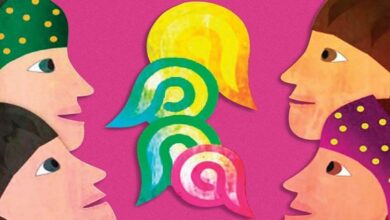Social categories theory types and examples
Social categories
Social categories are groups of individuals who relate to each other because they share some common characteristics. They can be of a very different nature, for example being able to find social categories related to sex, ethnicity, occupation or culture.
Social categories differ from other similar classifications mainly in the sense that they do not produce a group identity. This means that people belonging to a social category would not use it to talk about themselves or to describe themselves, nor would they initially feel closer to other people within it.
However, the study of social categories can be very useful in certain contexts, as it allows us to know certain phenomena that determine the behavior, beliefs and life experiences of the people who belong to them. For this reason, research on them is an important part of the social sciences.
An example of a social category might be “teenagers”. People belonging to this group share a number of common characteristics and live similar experiences, but they do not feel identified because they belong to this category and do not interact with each other just for that reason.
Theory of social categories
Sociology and psychology have investigated concepts such as social identities, categories and social groups since the 19th century. However, the first formal experiments and theories on this particular subject did not appear until the mid-20th century.
One of the studies that most helped to shape current theories of social categories was that of Robbers Cave State Park. In it, a group of sociologists led by Muzafer Sherif took 200 12-year-olds to spend several days here, in a kind of summer camp that would help them learn more about group relationships.
At the beginning of the experiment, the researchers divided the participating children into two groups completely at random. At that time, young people belonged to the same social category, as they shared an infinity of characteristics, beliefs, experiences and ways of seeing life, even if they did not know each other before.
In fact, in this experiment, all the children came from upper-middle-class families, all from the Protestant religion and from the white ethnic group. However, all these social categories did not provide them with a group identity or any special motivation to interact with each other.
After the first few days of camp, the researchers found that belonging to one group or another encouraged stronger bonds between children. Indeed, leadership/submission dynamics, subgroups, a common identity and similar goals began to emerge within each of the two groups.
What researchers have learned about social categories
The Cave of Thieves experiment did not aim to study social categories or their nature, but to better understand group conflicts and their formation. However, indirectly, this research allowed its promoters to understand the role that categories play in people’s lives and functioning.
As these researchers have observed, social categories do not play a very evident role in people’s lives. In most cases, belonging to a specific ethnic group or social class does not give people a strong sense of identity, nor does it lead them to seek relationships with others who share that trait.
However, indirectly, social categories can have a big impact on people’s lives. According to most sociological theories, belonging to a specific ethnic group or social stratum can completely change an individual’s life experience, worldview, opportunities and way of thinking.
On the other hand, researchers in the Cave of Thieves experiment realized that social categories are, in many cases, precursors to other forms of closer relationships, such as group identities. However, this does not always have to be the case.
Types and examples of social categories
Any characteristic shared by a large enough group of people can become a social category. For this reason, we can find a large number of them, which makes experts tend to classify them in a number of categories. Next, we’ll look at some of the most important ones.
– Was
Age is one of the characteristics that most influences our lives without us realizing it. Based on this social category, we have a series of expectations and beliefs about the world and about ourselves that determine many aspects of our existence.
– Sex or gender
Sex or gender is another of the most important social categories, as it creates a very clear and unconscious division between the two halves of the population.
Being male or female carries a series of behavioral expectations (commonly known as gender roles) and ways of seeing the world that can completely change one’s life experience.
– ethnicity
One of the social categories that most interests sociologists is that related to ethnicity. For most researchers, an Asian person will have a very different range of experiences than a white ethnic group, simply because they were born with a different skin color.
It is important not to confuse ethnicity with culture, because in the second case we would be talking about an element that can create a strong identity and a feeling of closeness with other people belonging to the same group.

